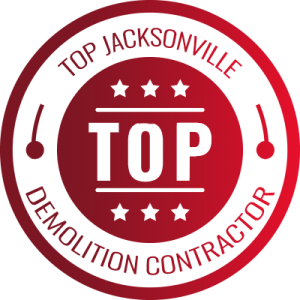



Demolition projects in Southeast Georgia need a solid plan in place, especially when it comes to avoiding utility problems. Whether it’s a large warehouse, office park, or retail space coming down, underground and overhead utility lines add one more layer of risk that can be easy to overlook. If even one line is damaged during the process, the fallout could cost a lot more time and money than expected.
Protecting utility infrastructure isn’t just about following safety rules. It’s also about protecting your schedule and the area around the job site. Gas lines, water mains, fiber optic cables, and power lines all need to be handled the right way. A single cut wire or burst pipe could stall everything and even put lives in danger. That’s why plans for utility protection should start at the very beginning of a commercial demolition project.
Identifying Utility Lines
Before any equipment starts moving, the work zone needs a full layout of where utilities are located. This isn’t just a quick walkthrough with blueprints. Most commercial properties in Southeast Georgia have utilities that were rerouted, added, or abandoned over the years. Skipping this step or relying only on old site records can lead to big surprises.
Here’s what identifying active and inactive lines usually involves:
- Calling utility providers to get accurate and up-to-date records
- Contacting 811 or local services to mark public lines
- Hiring private locators for lines that aren’t covered by public records
- Using detection equipment to find buried or unknown utilities beneath slabs or in walls
Even properties that look straightforward from the street can have tangled underground networks. For example, a strip mall built in the 1980s might still have live electric lines running to a disconnected light pole, or an abandoned gas line filled but not properly capped. These are the kinds of details that cause issues during demolition if not dealt with early.
The key is confirming the difference between what’s old, what’s still connected, and what’s no longer in use. Utility companies can help identify active services, give clearance timelines, and issue special handling instructions for fragile or high-risk lines. This step also helps clarify what needs to be turned off, capped, or rerouted ahead of demolition.
Tools and Techniques for Protecting Utility Lines
Even with markings and maps in hand, it still takes the right tools and techniques to protect utility lines as demolition gets underway. The line between a safe project and a dangerous one usually comes down to how well the equipment operators, site managers, and engineers can trust what’s in front of them.
To help with that, many teams use a mix of proven strategies, like:
1. Ground-Penetrating Radar (GPR): Helps locate utilities hidden below concrete or soil, especially useful when maps don’t match the site
2. Hydro Vacuum Excavation: A method that uses water and suction instead of digging with metal tools, ideal near gas or high-voltage lines
3. Temporary Barriers and Flagging: Marks and separates sensitive zones during demolition
4. Controlled Demolition Zones: Sets up clear boundaries around utility areas to keep heavy machinery from entering risky zones
5. Real-Time Utility Monitoring: Tracks pressure, flow, or power interruptions during active work to react quickly to changes
These techniques lower the chances of hitting utility lines while making it easier for crews to stay focused on their task. They give site leaders the flexibility to respond if something unexpected pops up behind a wall or under the pavement. This helps avoid reactive decision-making during chaos and instead keeps the focus on safe, steady progress.
In Southeast Georgia, where extreme temperatures and sudden rain can change ground conditions quickly, tools like hydro excavation and radar make a big difference. They help keep the demolition moving forward without damaging what lies beneath. When utility lines are kept safe and clearly marked, projects have a better chance of staying on time and safe for all involved.
Planning and Coordination for Utility Line Safety
Planning every detail before demolition begins makes all the difference when it comes to avoiding utility problems. A solid plan isn’t just a box on a checklist to get permits approved. It’s the actual roadmap for who does what, when it happens, and how to make sure nothing important gets hit or buried in the chaos.
Working closely with utility providers comes first. In Southeast Georgia, commercial buildings may be tied into networks operated by both public utility departments and private service vendors. Early coordination gives enough time to shut things off safely, reroute if needed, or confirm that nothing is still active.
Site managers play a big role here. They’re the ones organizing daily schedules, planning inspections, and confirming that all utility work is done before demolition crews arrive. When everyone knows what the expectations are from the start, it makes it much easier to adjust if weather, staffing changes, or old construction problems show up later.
Some useful planning steps include:
- Marking utility locations and protection zones on demolition drawings
- Holding jobsite meetings with utility crews, engineers, and demolition leads
- Scheduling early disconnects to build some buffer in the timeline
- Confirming and reviewing utility markings before each stage of demolition
- Assigning a specific crew lead to watch utility protection efforts throughout the project
Well-placed follow-ups with utility reps can catch delays before they turn into bigger headaches. Even if the original plan was solid, it’s better to adjust early than deal with a problem during active demolition. Staying flexible, staying alert, and keeping communication open is what makes these plans work in the long run.
Risks of Damaging Utility Infrastructure
When something goes wrong in demolition, broken utility lines are among the worst problems to deal with. They don’t just stop crews from working—they also threaten worker safety, nearby buildings, and even the public depending on the type and severity of the damage.
Common utility risks during demolition include:
- Gas leaks that require hazmat response or evacuation
- Wide-area power loss from cut electric lines
- Broken water mains flooding basements, lower levels, or neighboring lots
- Interruption of fiber or communication lines that halt business operations
Even if the line cut isn’t active, the repair or investigation that comes after can still cost a business time. Liability issues come up quickly, especially when a damaged line affects more than just the demo site. Legal fallout, unexpected investigation costs, or neighborhood service complaints can pull attention from demolition goals fast.
A lot of these problems come from rushing, or from trusting outdated prints that no longer reflect what’s actually in the ground. Mistakes may not seem serious in the moment, but the setbacks stick—and they pile up. That’s why so much of demolition success comes from prep work. Finding trouble before the machines fire up is always cheaper and safer than dealing with it halfway through.
Why Careful Utility Planning Pays Off
Utility line protection isn’t just a checklist item. It’s something that needs to be part of every phase of the project—from the first walkthrough all the way to the final cleanup. When everyone stays laser focused on keeping those lines safe, the risk of delays, injuries, and budget surprises drops fast.
In Southeast Georgia, the terrain and infrastructure often bring added challenges that can’t be solved with a cookie-cutter plan. Older railyard warehouses with layered utility systems or retail campuses with underground fiber make each project feel different. That’s why identifying utility lines correctly, using the right tools, and keeping a clear and updated plan throughout the demolition is non-negotiable.
At the end of the day, good preparation makes everything smoother. When utility protection is planned well and managed right, commercial demolition projects across Southeast Georgia stand a better chance of wrapping on schedule with fewer surprises. Keeping crews safe and equipment rolling on time starts underground—with the lines that keep everything connected.
For businesses in Southeast Georgia looking to safely manage their demolition projects, safeguarding utilities should be a priority. From proper planning to execution, every step matters. To learn more about effective strategies and how Elev8 Demolition can assist with commercial demolition in southeast Georgia, explore our insights and professional support.

